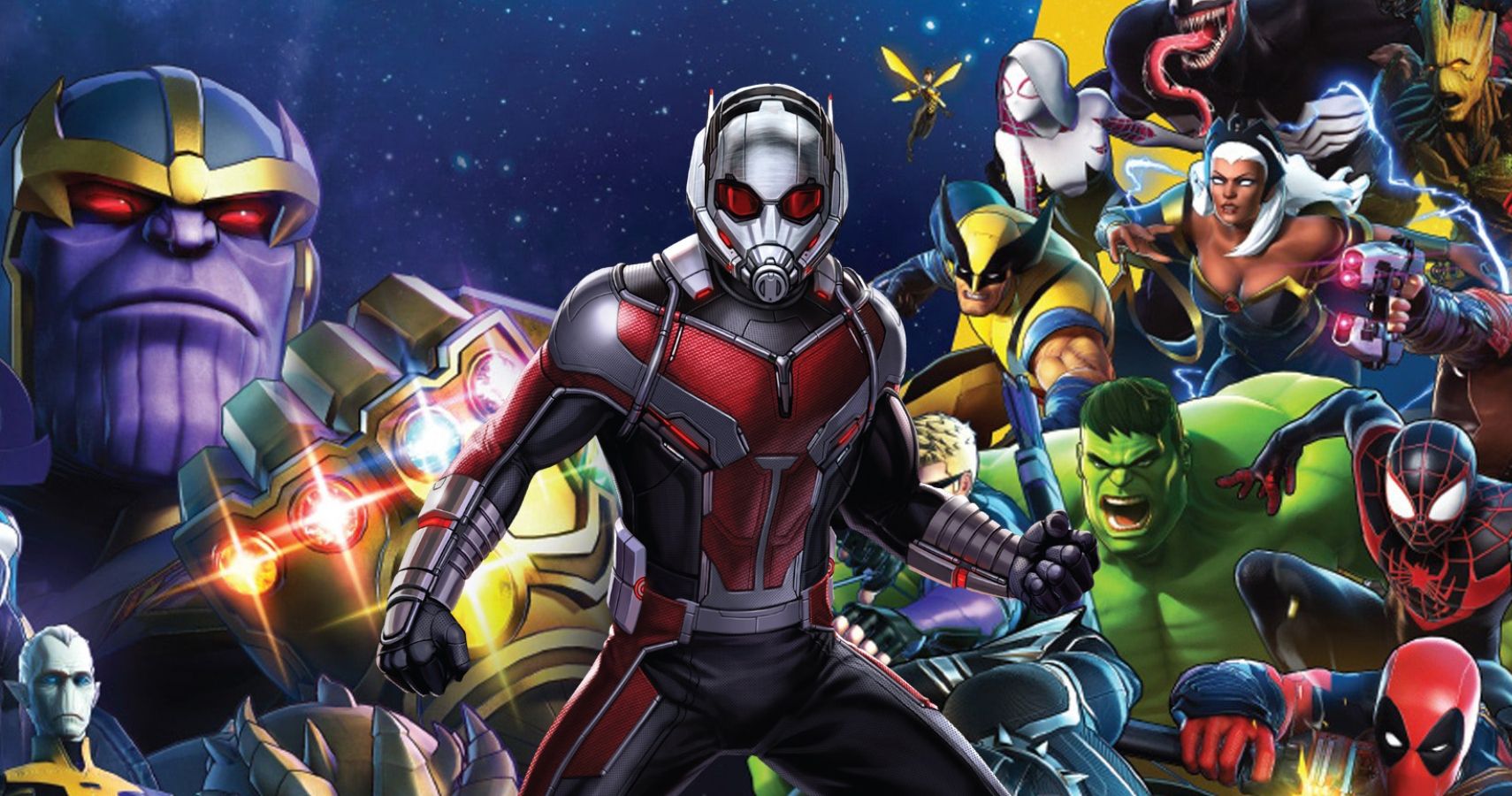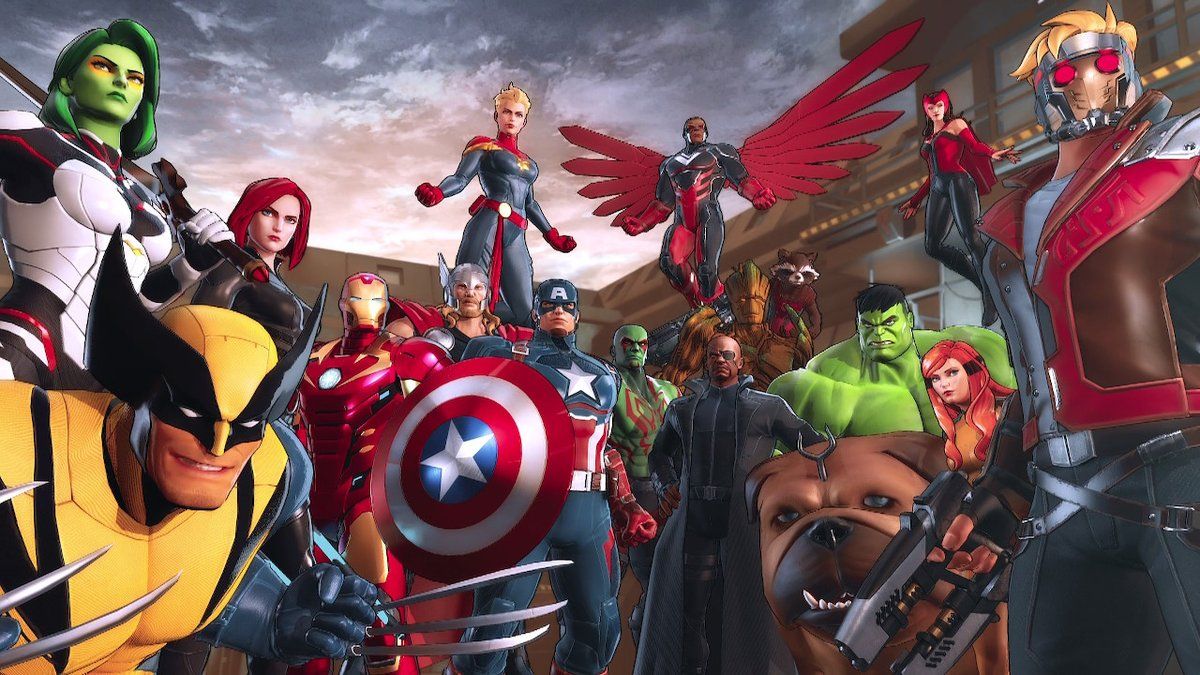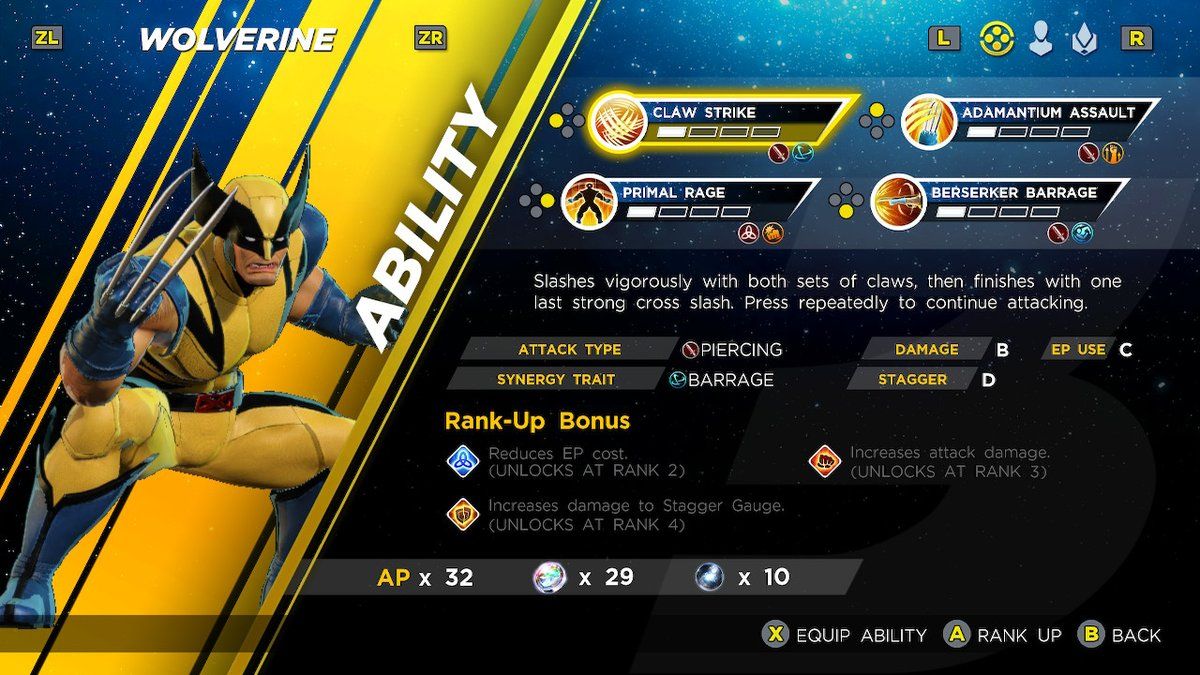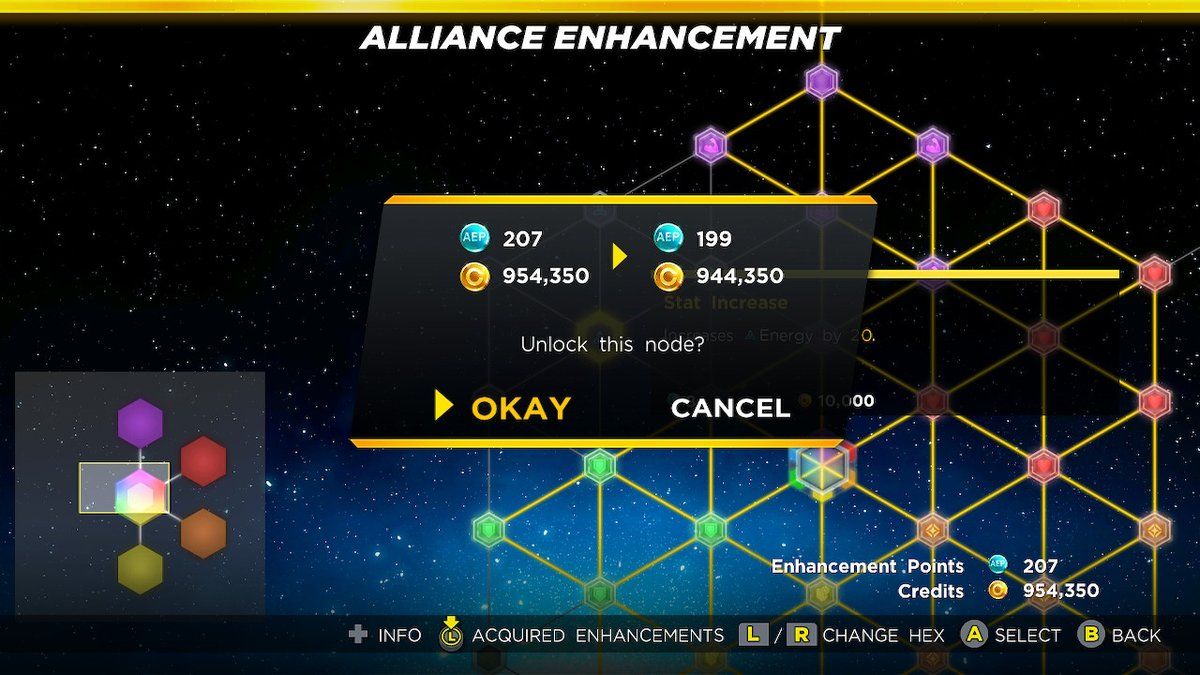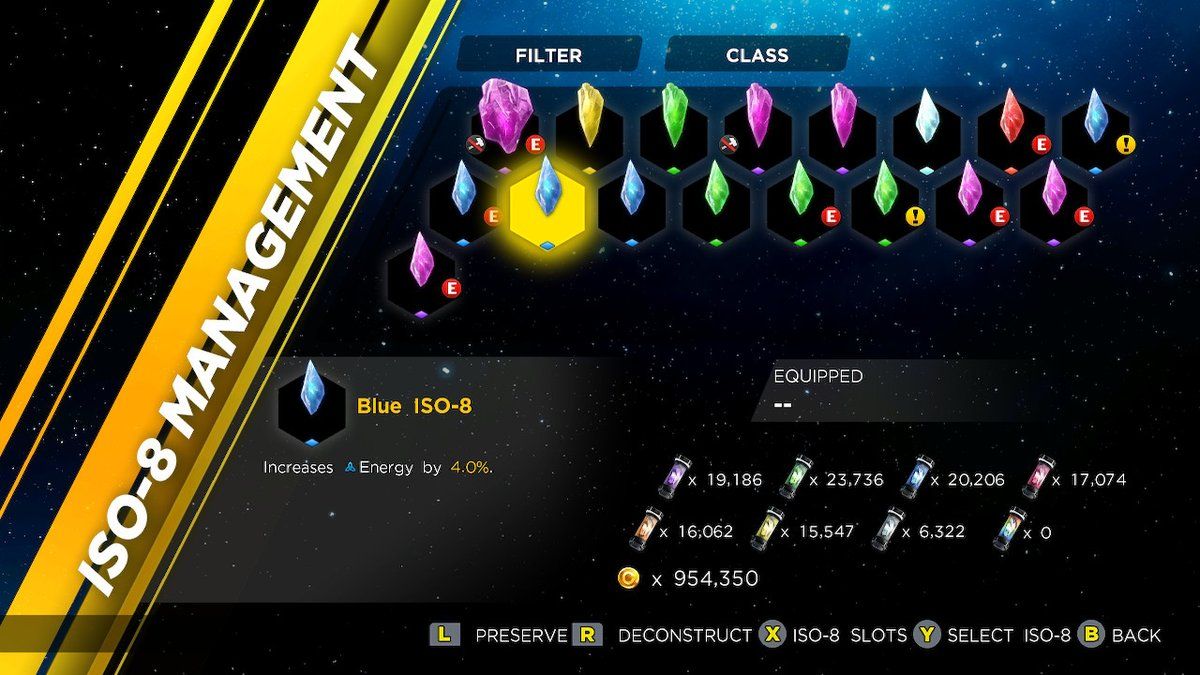Marvel: Ultimate Alliance 3 has a number of different currencies that are earned while playing, all of which are used to improve your characters as you progress through the story, but at first, they can all be overwhelming and confusing.
Read on ahead to find out exactly what you are picking up while smashing through levels and how they can benefit your team!
Ability Points (AP)
When examining the character ability screen, Ability Points are used to level each individual skill from the initial rank one up to the top rank four. They are acquired simply by leveling up that character and are not shared among the roster. This means that even at a high rank, a low-level character will first need to be leveled in order to upgrade their abilities.
Ability Orbs
Ability Orbs compliment Ability Points in that later, they too are a cost to upgrade an ability. However, these Orbs are not tied to a single hero. Instead, these are shared across the roster and can be found from containers, dropped by enemies, and are rewarded from certain Infinity Trials upon first completion.
Void Sphere
These handy consumable items are similar to a “respec” in other games, whereby using a Void Sphere reverts abilities to their lowest rank and refund all Ability Points and Orbs used before.
At the moment, it is unclear exactly where these can be located outside of certain points in the story in containers, which are a one-time find. The same is true of Infinity Trails, where some can be gained as a reward for a first completion. There is likely to be a limit regarding how many Void Spheres are given to players because an infinite number would mean that players could reinvest their skills and Ability Orbs without any thought, and this takes away from the decision making process if all choices can be canceled later.
With that said, since there is no competitive aspect to the game, perhaps having an infinite number of these consumables would not be a bad thing, allowing for players to experiment freely with the entire roster.
Enhancement Points
Enhancement Points are of the utmost importance to level the Alliance Enhancement grid, providing the powerful buffs shared by all characters. These points are acquired when leveling up a character. This means that while it may be tempting to power through the story and only invest in one strong team, you may find yourself short of necessary components to keep expanding the grid.
By leveling other characters in the Infinity Trials, either as a team or simply with a strong anchor character of a high level to do the heavy lifting, or by using XP cubes, you will gain more of Enhancement Points and make everyone stronger. You know what they say, there is no “I” in “Team.”
Credits
Credits are mainly used for the Alliance Enhancement grid alongside Enhancement Points, and will be found in abundance throughout the game and come from defeating enemies or destroying breakables in a level. Spending a moment while running through rooms and halls to hit every decorative piece might seem odd, but it will reward a steady stream of credits, which are also needed later on to upgrade and modify ISO-8.
ISO-8 & ISO-8 Fragments
The first we know are found from enemies or hidden away across a map and can boost the attributes of our heroes. The second is used with credits to modify the first, and are often found by defeating enemies and, similar to credits, by smashing all breakable items.
That concludes the list of all the currencies found while playing Marvel: Ultimate Alliance 3. Remember that a core theme of the leveling system in the game is to focus not on only a few heroes, but on a wide range to make the team stronger.
Doing so will provide you with more resources for the Alliance Enhancement grid, which makes everyone more powerful, and also Ability Orbs, which do not need to be shared among everyone and can then be used to those specific characters you may want to beef up in their skills.

